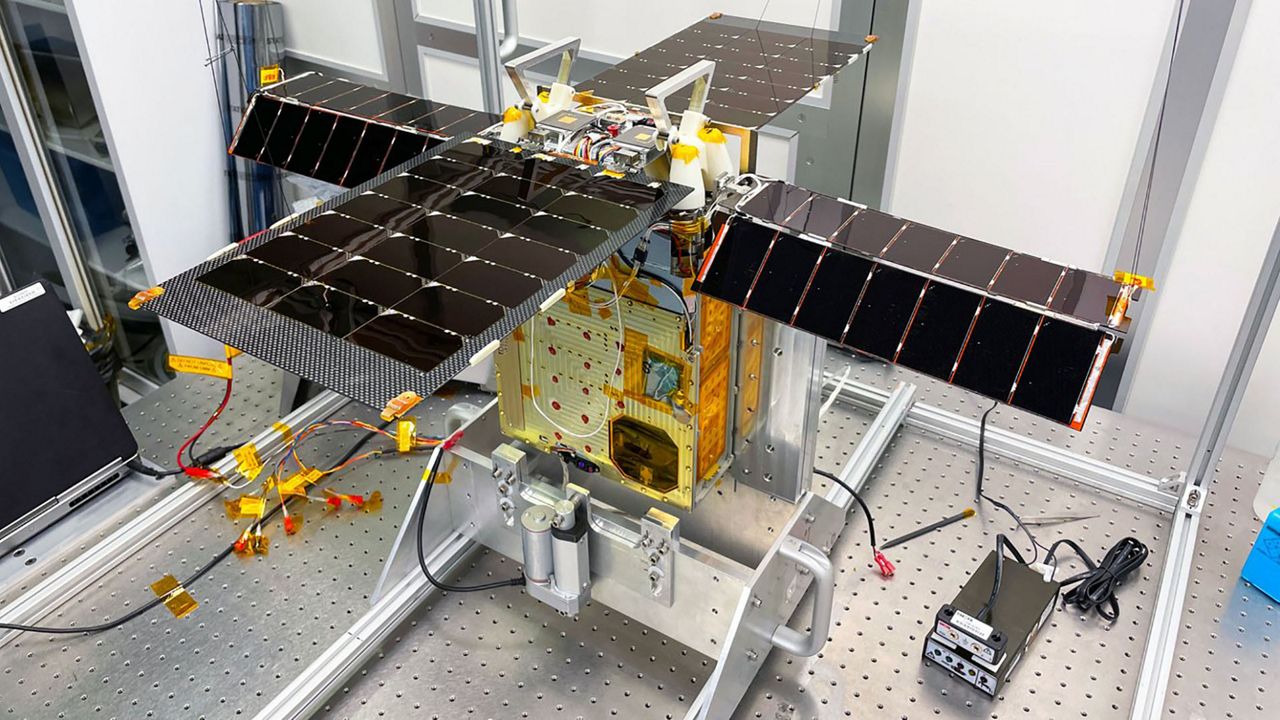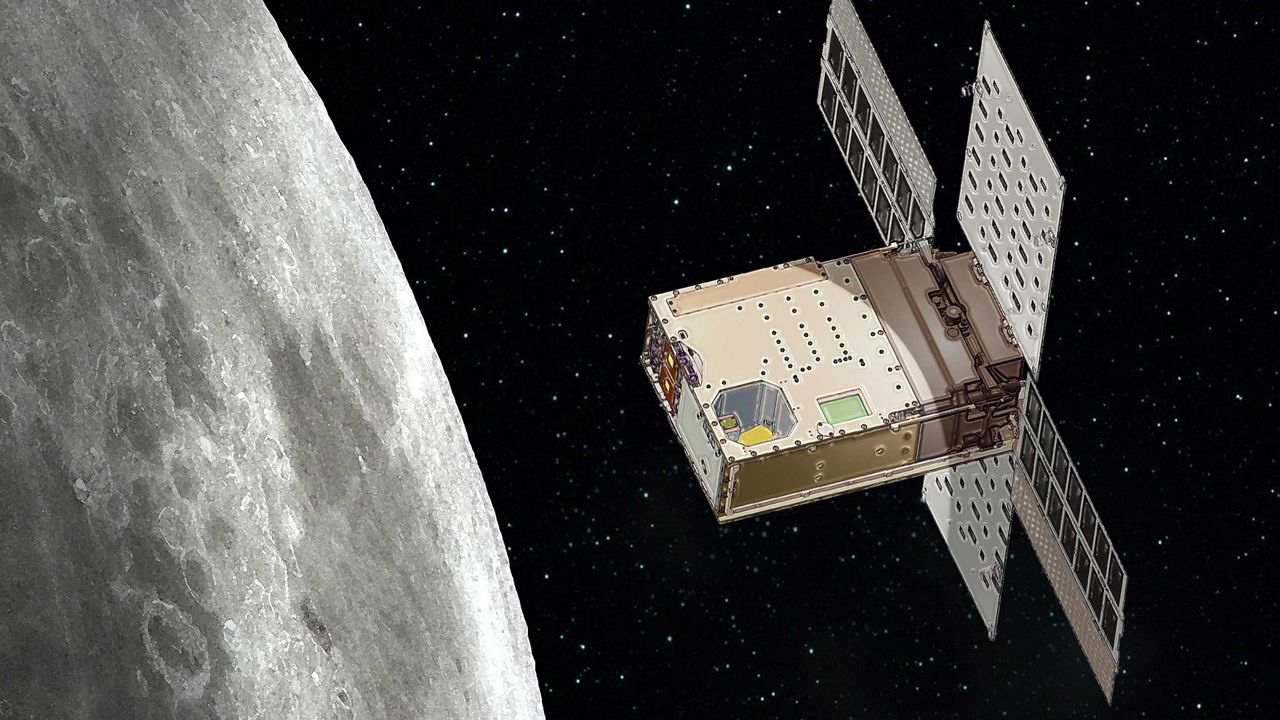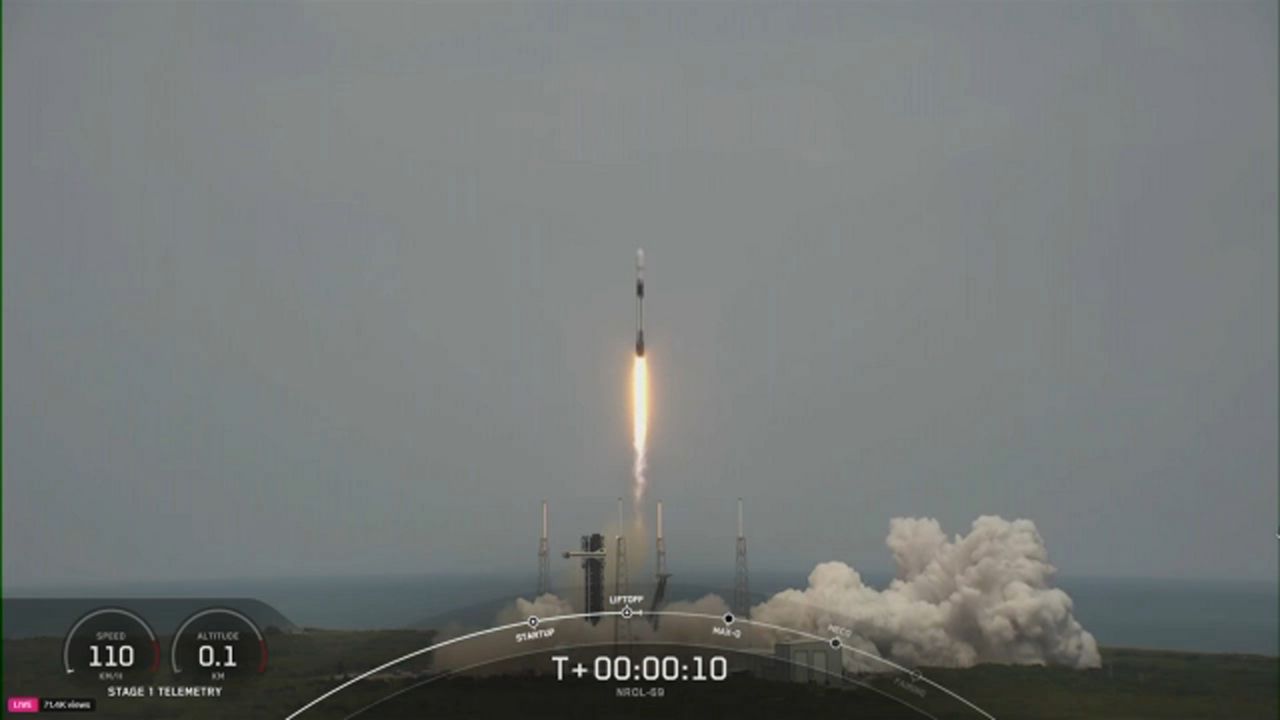CAPE CANAVERAL SPACE FORCE STATION — SpaceX successfully launched double moon missions early Sunday morning: ispace’s HAKUTO-R Mission 1 and NASA’s Jet Propulsion Laboratory’s Lunar Flashlight.
What You Need To Know
- Falcon 9 sent off ispace’s HAKUTO-R Mission 1 and NASA’s Jet Propulsion Laboratory’s Lunar Flashlight
-
- The Lunar Flashlight's principal investigator explains how the little satellite works
- RELATED coverage: Japan-based ispace aims to put the first privately-funded lander on the moon
- 🔻Scroll down to watch the launch🔻
Liftoff! pic.twitter.com/FEenmAJmOz
— SpaceX (@SpaceX) December 11, 2022
SpaceX’s Falcon 9 rocket lifted off from ispace’s HAKUTO-R Mission 1 and NASA’s Jet Propulsion Laboratory’s Lunar Flashlight at 2:38 a.m. EST, Sunday, Dec. 11.
The Falcon 9’s first-stage booster used for this mission, B1073, has sent up three Starlink missions and the SES-22 telecommunications satellite.
After stage separation, the booster returned to Landing Zone 1 at Cape Canaveral Space Force Station and a sonic boom may have been heard by many.
Falcon 9’s first stage has landed on Landing Zone 2 pic.twitter.com/0viaOjqKR1
— SpaceX (@SpaceX) December 11, 2022
SpaceX confirmed the deployment of the ispace's HAKUTO-R Mission 1.
Deployment of ispace’s HAKUTO-R Mission 1 confirmed pic.twitter.com/9R3Uw2qceS
— SpaceX (@SpaceX) December 11, 2022
Delayed Launch
Originally, the launch was supposed to take place on Wednesday, Nov. 30, with an instantaneous launch window at 3:39 a.m. EST, but on Tuesday evening, it held off to allow for more pre-flight checkouts.
Standing down from launch of ispace's HAKUTO-R Mission 1 to allow for additional pre-flight checkouts; now targeting Thursday, December 1 at 3:37 a.m. ET for liftoff
— SpaceX (@SpaceX) November 30, 2022
Then, it was going to try for Thursday, Dec. 01, at 3:37 a.m. EST. However, on the night before, the company announced on Twitter that because of further inspections, it would stand down from the Thursday launch.
After further inspections of the launch vehicle and data review, we're standing down from tomorrow's launch of @ispace_inc's HAKUTO-R Mission 1; a new target launch date will be shared once confirmed
— SpaceX (@SpaceX) December 1, 2022
SpaceX did not release any information about what the inspections entailed or what the data review showed. Spectrum News reached out to SpaceX for additional information, but the California-based company did not respond back.
In an earlier press release on Friday, Dec. 2, ispace revealed the Falcon 9 returned to its hanger for more inspections.
"However, it was decided to return the launch vehicle to a hanger for additional inspections. Battery charging operations for the lander will continue during that time," ispace stated, adding that there are no issues with its lunar lander.
But on Wednesday, Dec. 07, ispace announced the new launch date was set for 2:38 a.m. EST, Sunday, Dec. 11.

About the two missions
SpaceX did indeed launch both the ispace’s HAKUTO-R Mission 1 and NASA’s Jet Propulsion Laboratory’s Lunar Flashlight mission early Sunday morning.
The Japanese private company sent up the lunar lander as part of its HAKUTO-R lunar exploration program.
ispace officials say the mission is simple: It is a demonstration to confirm the lander’s design and technology, as well as prove the company’s business model to provide reliable transportation to the moon and data services.
The nearly 750-pound ispace Series 1 lander is about 7.5 feet tall and 8.5 feet long. Plus, it has a payload of 66 pounds, so it can fit such things as rovers, scientific equipment and cameras.
Specifications show it is quite large compared to its Lunar Flashlight traveling companion.
Read more about the ispace’s HAKUTO-R Mission 1 right here.
Under The Lunar Flashlight
NASA’s Jet Propulsion Laboratory’s Lunar Flashlight satellite is about the size of a briefcase, but while small, it packs a lot of power.
After all, its mission is to use lasers to search for ice in the moon’s permanently shadowed regions at the South Pole where the sun does not shine, explained Dr. Barbara Cohen, the Lunar Flashlight’s principal investigator at NASA’s Goddard Space Flight Center in Greenbelt, Md.
“The Lunar Flashlight will be able to detect surface water ice,” said Cohen to Spectrum News days before the Sunday launch. And “water ice” is a term to explain either solid ice or frost.
While NASA has had similar missions in the past to search for ice, the Lunar Flashlight is on a mission that will be a definitive search for it, not speculative, she explained.
Cohen said that there are many theories of how the barren moon can have ice, either by solar winds interacting with the lunar surface or by deposits from crashing meteors.
One of the mission parameters is to find out if there is ice, how it got there, how long it lasts on the moon and how astronauts and future missions can use it, she said.

How it works
The Lunar Flashlight is the first to use a four-laser reflectometer to search for ice on the lunar surface.
The little satellite will shine near-infrared wavelengths to the shadowed parts of the moon’s craters, explained Cohen.
If the lasers hit rock, they will reflect back to the satellite to signal that there is no ice. However, if the lasers are absorbed, it means there is ice.
One purpose of the mission is to determine what the conditions are for ice to be in the shadowed regions of the southern pole of the moon, recognize those conditions and then search other areas that have those same conditions.
Cohen gave an example that oil companies do not just start drilling in the ground in the hopes of finding oil. Oil companies know what the conditions are for where oil should be and start searching and she said the same method is being applied here.
“It’s basic geology and figuring out the science,” she said.
Once NASA researchers recognize the conditions for where ice can be on the moon, they can “extend our knowledge to other places besides the moon, like asteroids,” Cohen said. “It’s understanding how (water ice) got there.”
And having ice on the moon will be beneficial to future Artemis missions when humans return.
Finding ice on Earth’s lunar sister is one thing. And according to Cohen, using current technology to purify any moon ice to drink is not hard to do, but figuring out how to bring that technology and make it practical might be a bit tricky.
Plus, researchers have to figure out just how much ice is needed for everyday use, like drinking.
The Lunar Flashlight mission started in 2013 and Cohen said there was a lot of patience and redesigns before the little satellite became what it is today. After all, it is a brand new type of satellite and technology.
In fact, a whole new style of orbit was created for this mission, Cohen explained. The Lunar Flashlight will use a near-rectilinear halo orbit, which saves fuel.
This will allow the tiny satellite to circle the moon from 42,000 miles from its furthest point of the Earth’s sister to get up close to about 9 miles above the lunar South Pole.
It will be an eight-month mission: It will take the Lunar Flashlight four months just to get to the moon.
But once there, it will start sending data it has collected back to Earth every six days, which will allow Cohen and her team to start right away to gather and understand the information.
Perhaps some space enthusiasts are getting a sense of déjà vu and they would be right. In many ways, the Lunar Flashlight is very similar to the NASA-funded ShadowCam that was launched back in August.
One of the ShadowCam’s missions is to search for ice in the northern and southern poles of the moon. And Cohen said that each ice-finding mission that NASA has sent up has its own methods of collecting data.








